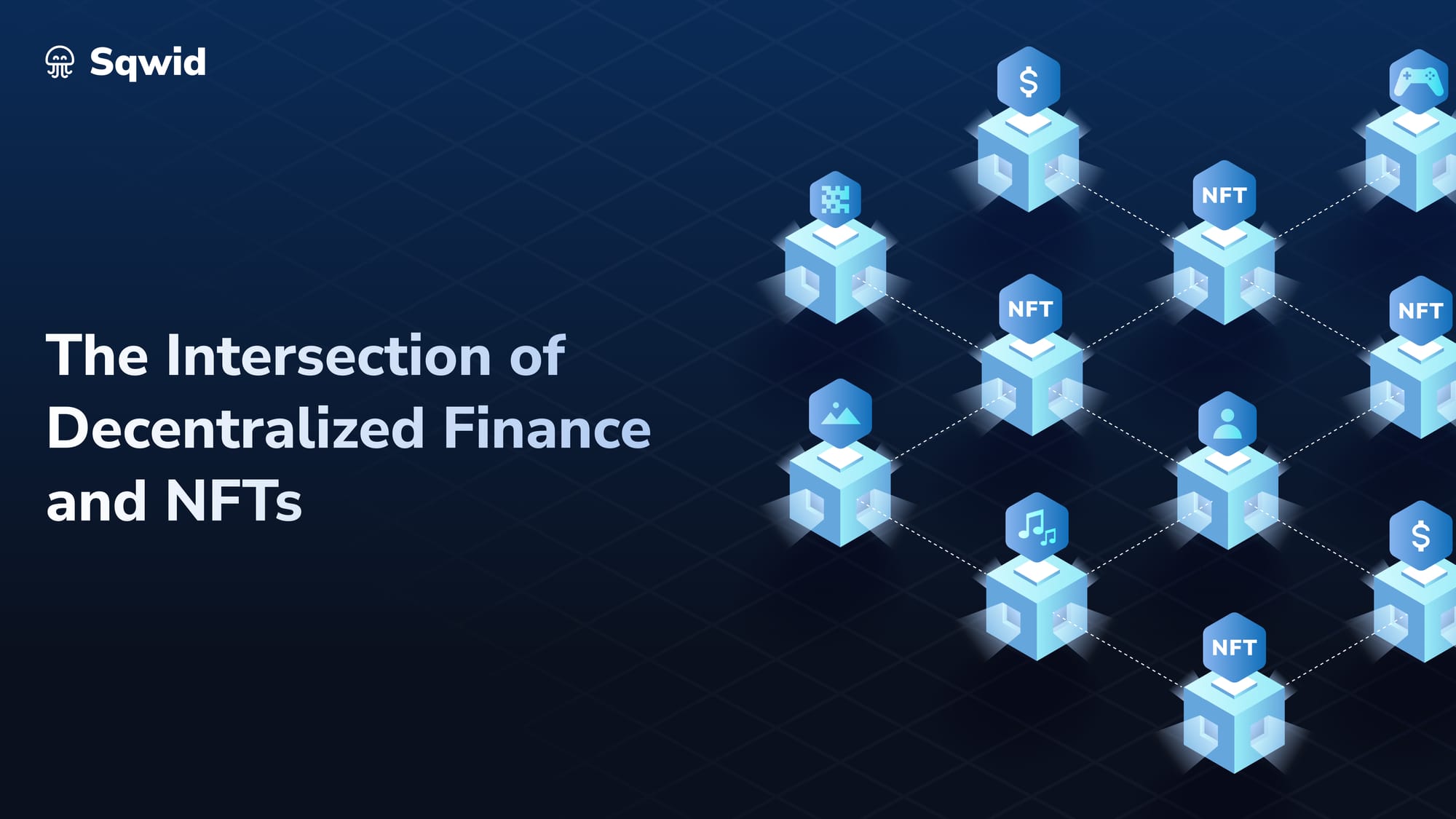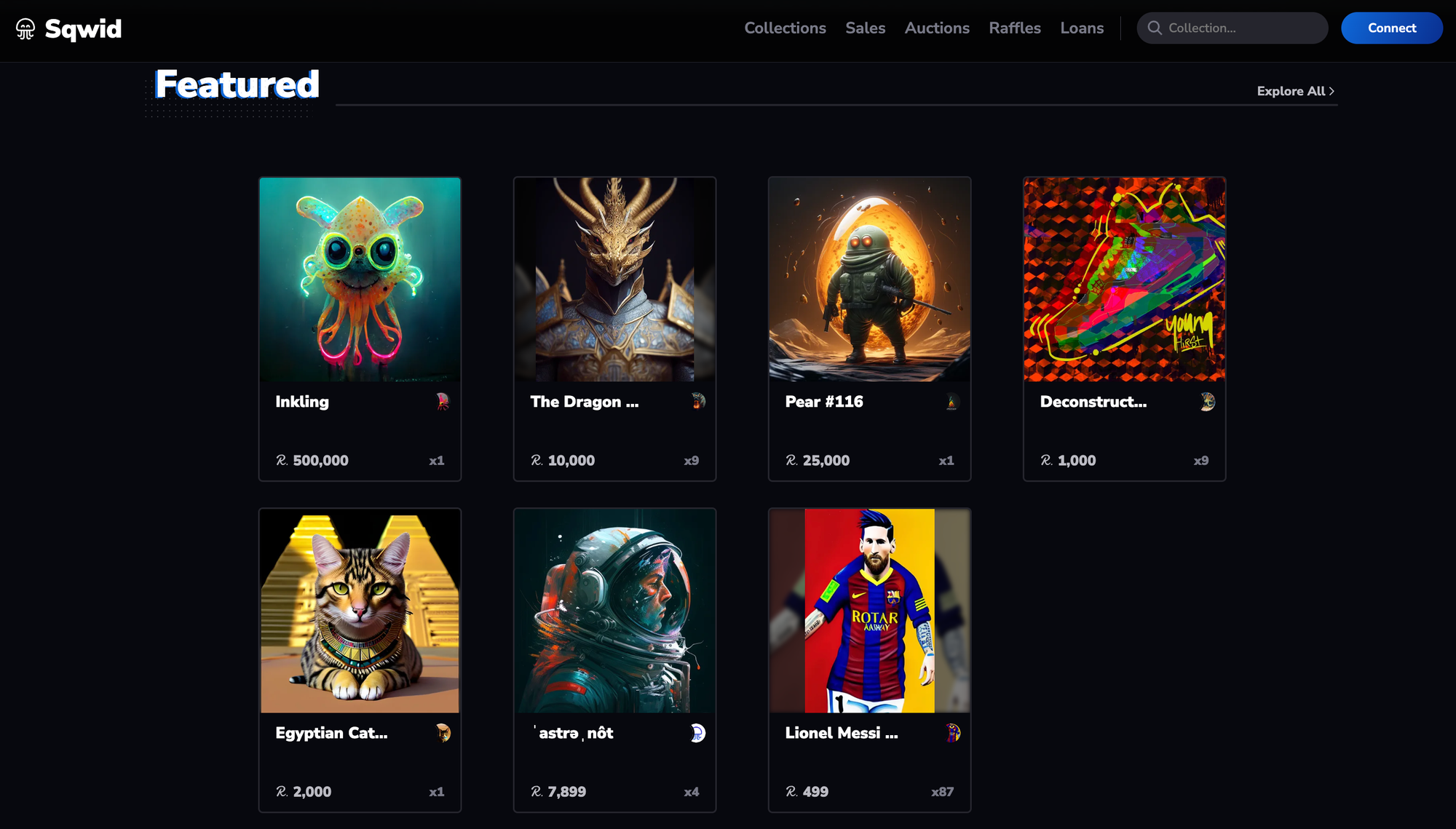The Intersection of Decentralized Finance (DeFi) and NFTs

Blockchain technology has given rise to two of the most transformative trends in recent years—Decentralized Finance (DeFi) and Non-Fungible Tokens (NFTs). While DeFi is reshaping traditional financial systems by offering decentralized lending, borrowing, and trading, NFTs have revolutionized digital ownership, enabling the creation and exchange of unique digital assets. But what happens when these two powerful forces come together?
The intersection of DeFi and NFTs is unlocking unprecedented opportunities in the digital economy. From new financial models to innovative use cases in gaming, art, and virtual real estate, the convergence of DeFi and NFTs is more than just a trend—it’s the foundation for the future of decentralized finance and digital assets. Let’s dive into how these two worlds are colliding to shape the next evolution of blockchain technology.
What is DeFi?

Decentralized Finance, or DeFi, is a movement that aims to reconstruct the traditional financial system on blockchain technology. Powered by smart contracts, DeFi applications (or DApps) eliminate intermediaries like banks and brokers. This allows users to lend, borrow, trade, and earn interest on digital assets in a completely decentralized manner, offering transparency, security, and accessibility.
The core appeal of DeFi is that it democratizes access to financial services, providing opportunities to anyone with an internet connection. It’s transforming traditional finance by offering higher yields, enhanced liquidity, and greater financial inclusion.
What are NFTs?

Non-Fungible Tokens (NFTs) represent unique digital assets that are indivisible and cannot be exchanged on a one-to-one basis like traditional cryptocurrencies. NFTs can be art, music, gaming assets, virtual real estate, and even digital identities. Their uniqueness and provenance are verified through blockchain technology, making them highly valuable in the digital world.
While DeFi focuses on financial utility, NFTs emphasize digital ownership and scarcity. Until recently, these sectors were somewhat distinct, but their convergence is starting to reshape the crypto space.
The Convergence of DeFi and NFTs
The fusion of DeFi and NFTs is creating new financial models and expanding the use cases for both technologies. Here’s how:
1. NFTs as Collateral in DeFi Protocols

DeFi protocols allow users to borrow or lend assets in a decentralized manner. With NFTs representing a new class of digital assets, they are now being integrated into DeFi platforms as collateral. This enables users to borrow stablecoins or other crypto assets against their NFTs without selling them.
For example, if you own a valuable NFT—such as digital artwork or a rare in-game asset—you can deposit it as collateral and receive a loan, similar to how you would use traditional assets like real estate in the real world. This unlocks liquidity for NFT holders, who can retain ownership while accessing capital.
2. NFT Yield Farming and Staking

Yield farming, a popular DeFi practice where users earn rewards for providing liquidity, has found a new avenue with NFTs. Some platforms now allow users to "stake" their NFTs in liquidity pools, where they can earn rewards in the form of tokens or additional NFTs.
For instance, some NFT marketplaces are introducing staking mechanisms where collectors can earn interest or governance tokens by locking their NFTs in a smart contract. This creates an exciting new way to generate passive income through digital collectibles.
3. Fractional Ownership of NFTs

NFTs, by nature, are unique and often have significant value. However, their high prices can make it difficult for everyday users to invest. Enter fractional ownership, a concept borrowed from DeFi that allows an NFT to be divided into smaller portions. These fractions can be bought and sold by multiple investors, enabling more people to access high-value assets.
Platforms that facilitate fractional NFT ownership allow users to participate in the growth of an NFT’s value without needing to purchase the entire asset. This combination of DeFi liquidity and NFT ownership is lowering the barrier to entry in the NFT space and democratizing access to rare and valuable digital assets.
4. NFT-Backed Synthetic Assets

Another innovation at the intersection of DeFi and NFTs is the creation of synthetic assets—tokenized versions of real-world or digital assets that track their value. Some DeFi platforms are now issuing synthetic assets backed by NFTs, allowing users to trade NFT values without owning the actual item.
For example, if a particular NFT collection becomes popular, a synthetic asset tied to the value of that collection can be traded on DeFi platforms, offering a new layer of liquidity and speculative opportunities for traders.
Use Cases of DeFi and NFTs Convergence

1. Gaming
The gaming industry is one of the most significant beneficiaries of the DeFi-NFT convergence. In blockchain games, NFTs represent in-game assets such as characters, weapons, or real estate. Integrating DeFi features allows players to stake their NFTs, trade them for in-game currency, or even earn interest on their holdings while playing.
Games like Axie Infinity and The Sandbox have already embraced this model, creating virtual economies that go beyond gameplay, where players can earn real money by leveraging their NFTs in DeFi ecosystems.
2. Art and Collectibles
NFTs have already transformed the art world, but DeFi is enhancing how collectors can interact with these digital masterpieces. Instead of simply holding an NFT, art collectors can now use DeFi protocols to borrow against their NFT portfolios or earn returns by lending them out for display in virtual galleries. This offers new revenue streams for artists and collectors alike.
3. Real Estate
Virtual real estate platforms such as Decentraland and Cryptovoxels have become popular through the use of NFTs. By incorporating DeFi principles, users can now trade virtual land, stake real estate assets, or even rent them out to other players or investors. This opens up an entirely new marketplace for virtual property.
The Challenges Ahead
While the convergence of DeFi and NFTs presents exciting opportunities, it also comes with challenges.
- Volatility: Both NFTs and DeFi assets are highly volatile. Using NFTs as collateral may lead to liquidation risks during market downturns.
- Liquidity: While DeFi excels in creating liquid markets for fungible tokens, NFTs are inherently illiquid. The challenge is in developing solutions that make unique digital assets more tradable.
- Regulation: As NFTs and DeFi gain traction, regulatory scrutiny is inevitable. Balancing innovation with compliance will be a key issue in the coming years.
A New Digital Frontier

The intersection of DeFi and NFTs is creating a new digital frontier where ownership, finance, and community engagement blend seamlessly. By unlocking liquidity for unique assets, enabling fractional ownership, and offering new ways to earn through staking and yield farming, this fusion is transforming the way we think about digital value.
As more projects integrate DeFi functionality into NFTs and vice versa, the potential applications seem limitless—from gaming and virtual real estate to art and synthetic assets. We’re witnessing the early stages of what could become the backbone of the next digital economy, where ownership and finance are democratized and decentralized for all.
The future of digital assets is bright, and at the heart of it lies the synergy between DeFi and NFTs.
